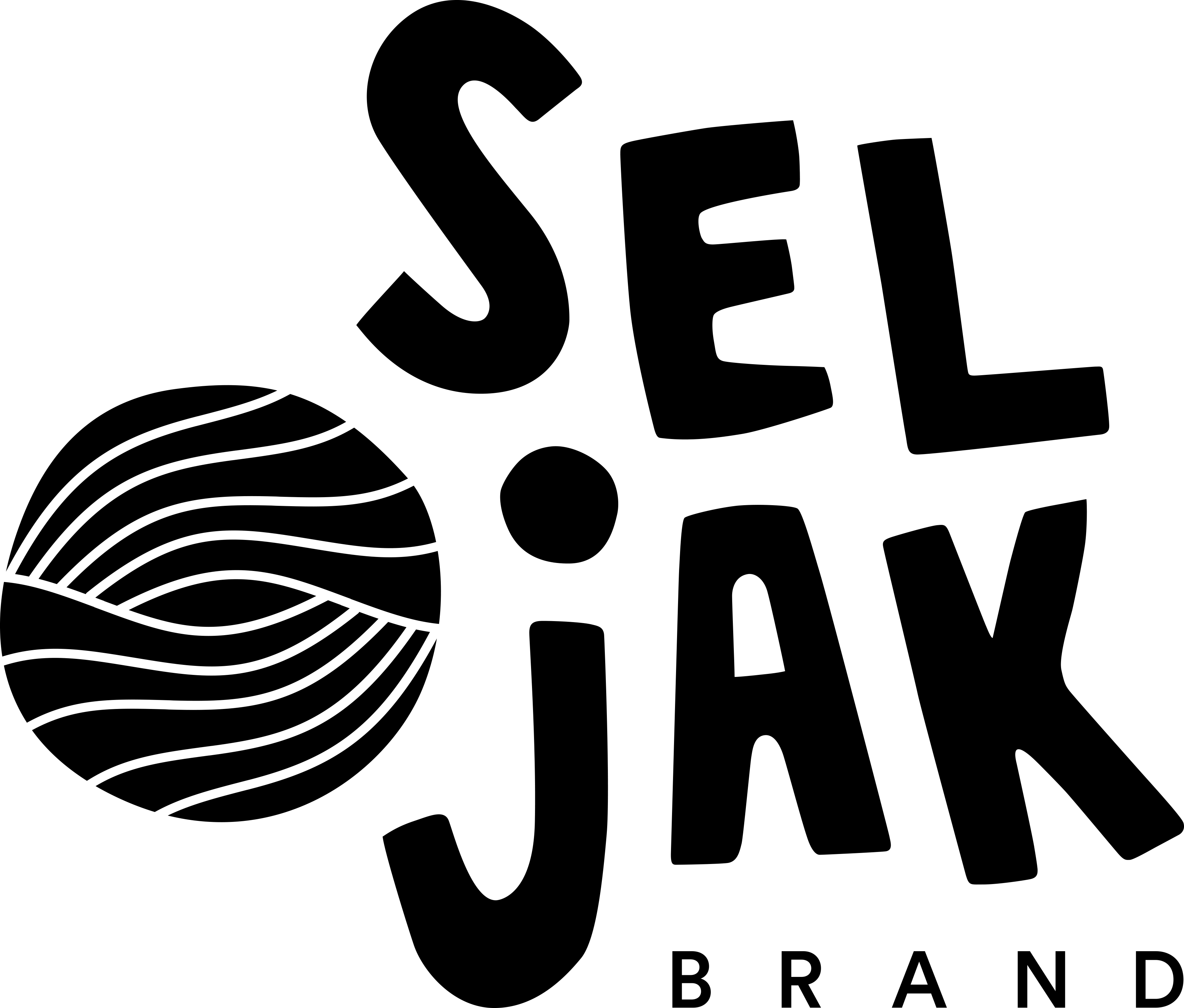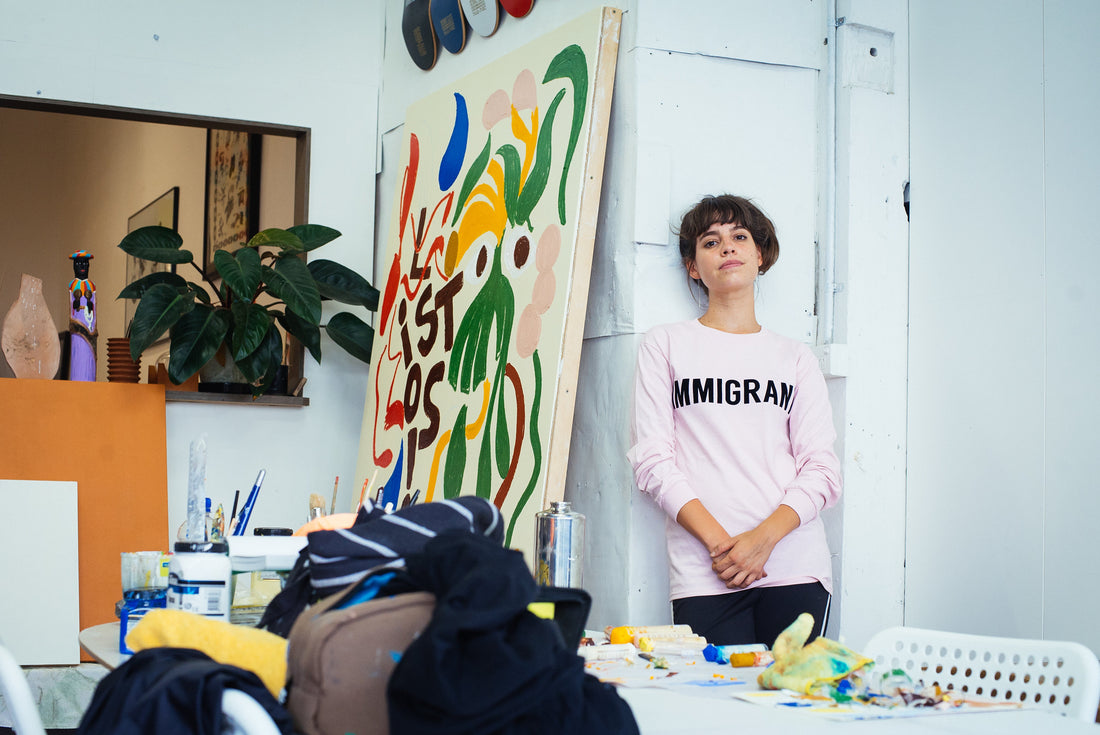
Image: Kurt Davies
We’ve done a lot of work with artist Nadia Hernandez over the course of Seljak Brand’s life. From our logo to tote bags, you can see Nadia’s influence everywhere. We work with her because she inspires us to be positive and active about what we believe makes a more restorative and inclusive world. We caught up with Nadia to learn more about why she makes art, her creative process and what inspires her.
You’ve always got such an interesting array of projects on. From city council to commercial (and live!) murals, to your own exhibitions with textiles, paper construction and oil painting, you have so much output — which is cross-medium and also very collaborative. What are you working on right now?
I’m working on a series of commissions, taking part in a group exhibition curated by Sebastian Moody, for the Brisbane City Council. Painting an old candy factory in Newtown, preparing to launch collaborations with Slow Down Studios and Banks Journal. As well as starting to work on a new body of work titled This Is My Army (Este Es Mi Ejército) which will open at Firstdraft gallery next April!
You create so. much. work. Speaking of beliefs, what drives you? What do you care about? I sense your artwork is a means to express this. There’s so much passion.
Have you seen the third season of Chef's Table? There’s one episode in particular you’ve got to see. It’s about a South Korean cook, a monk named Jeong Kwan. She talks about the meaning of soy sauce, and sauces which have been passed down through generations, and the essence of what that sauce means and holds. In the short span of my life, I’m creating work which is a reflection on my culture past and present, hearing her words resonate with my story and my work which is here is Sydney, but the place and people I draw that sense of strength and place from are far from here.
I always go back to my childhood in Venezuela and the experience of living away, while everything has changed. I create to remember. Place is really important. I create objects and textile pieces with text, symbols and old pieces of fabric, using photographs I’ve taken or collected as source material. My artwork is an iteration of my family, moments that we’ve shared and a reflection our cultural practice. It’s a way to maintain connections to that which is far and may one day not be physically present.
The textile piece I made in Venezuela [called Yo Soñe Este Día] touched the floor of my grandmother’s house, and the memories of making it are very vivid. I can recall the feeling of the house, the coolness of the tiles, the texture of the walls, the heaviness of the mountains which surround it. There is a certain value to these objects, they’re priceless. I will never sell that textile work.
Because of the political situation, economic and humanitarian crisis, Venezuelans are leaving the country and young creative people are adding to the diaspora. Current events, photographs, and text, manifest themselves as paper constructions which allow me to capture what’s happening at home and through colour and form gather people’s attention.
The internet allows me to collaborate with people at home, which is really powerful and expansive. And it’s allowed me to connect with Venezuelan artists elsewhere, from Caracas to Paris, to here in Sydney. I’m interested in how as creatives we can connect and encourage each other’s work. It’s interesting how a shared story can be so powerful, in a way there’s a certain familiarity already there because of a shared cultural background, and similar experiences permit a sense of collective understanding.
The artist, Carlín Díaz is based in Paris. Would we have met if what was happening at home was different? Perhaps not. We talk about this in our work, raise awareness, and reflect. Political messages have the power to bring people together.

Image: Georgie Cooke
Who are your influences? I remember you telling me about Nina Simone’s statement that to be free is to live without fear. Who or what else inspires you?
Visually it is artists like Keith Haring, Sister Corita Kent, Diego Rivera, as well as Latin American folk art and Pre-columbian art that have inspired me.
Politically it is Venezuela, in its journey toward economic collapse and humanitarian crisis, I guess this is kind of the reason why I started thinking about art in a serious way, I saw the ability to communicate and express an uncensored message to a wide audience about a situation that is deeply personal, relatable, and extremely complex, a situation that is so dire and extreme yet doesn’t get the airtime it deserves.
And finally…historically, it is movements where art has played a powerful role, once again in disseminating a message, such as the collective posters of Atelier Populaire during France’s massive strikes and protests in May 1968.
Your paper constructions have been a medium for you for a while now. Hearing about your influences I can see Venezuelan folk art in your constructions. I can see Atelier Populaire and the use of bold colour and shape to send a political message. In your exhibition ‘Cosas Antes y Después’ you painted with oil. It’s so free form in comparison, and extraordinary to see the bold strokes without hesitation, because I can imagine your paper work and murals take a lot of planning, and are intricate. Tell me more about why you use the mediums you use.
Sometimes I think maybe I should move to a farm and learn to do one thing really well. But I’m so drawn to people, to social situations, the city! I’m not sure if I have the patience to solely focus on one thing. My message is my craft; it’s about how can I communicate ideas, though mastering the physical output is still very important. Maybe one day I can have a team! So that I can focus more on generating ideas and work closely with a group of people to produce these ambitious projects I dream about.
In the meantime I’m investigating two concepts, that of army and that of ‘querencia', which is the title of a song by Venezuelan composer Simon Díaz, and briefly signifies the place you draw your strength from. I’ll use oils, ceramics, and textiles to manifest these ideas.

Image: Kurt Davies
How can people support the causes you care about? And how can people support you as an artist?
The most meaningful way people can contribute is to engage with my work, look at it, ask it questions, start conversations, enjoy it, ask more questions, reflect on your surroundings.
When my work sparks a conversation and gets to the core of an issue — bringing people from complacency to action — that’s when I feel it’s been successful!
You can support Nadia by purchasing a tote bag or commissioning a painting (our ultimate dream!).

